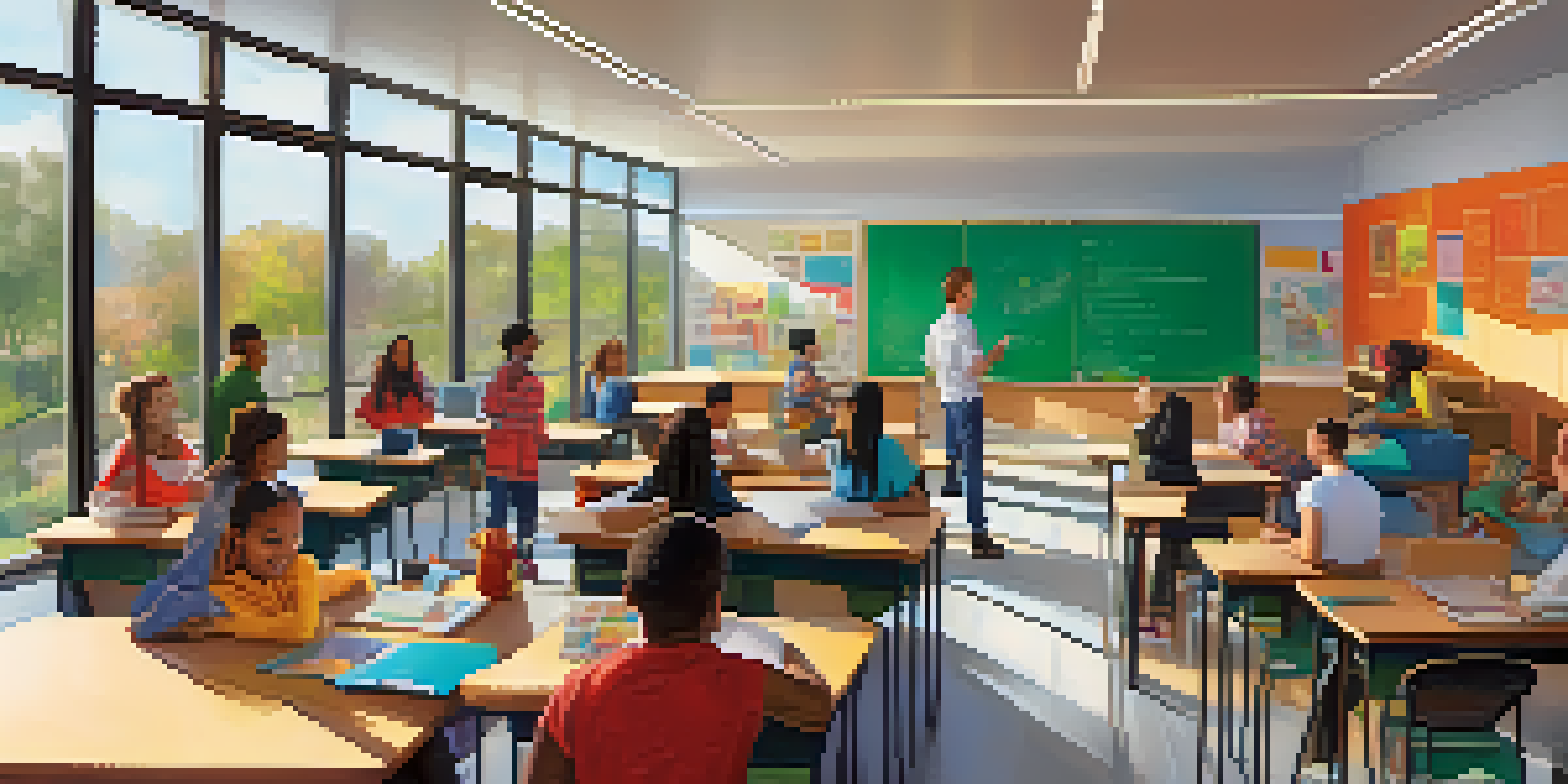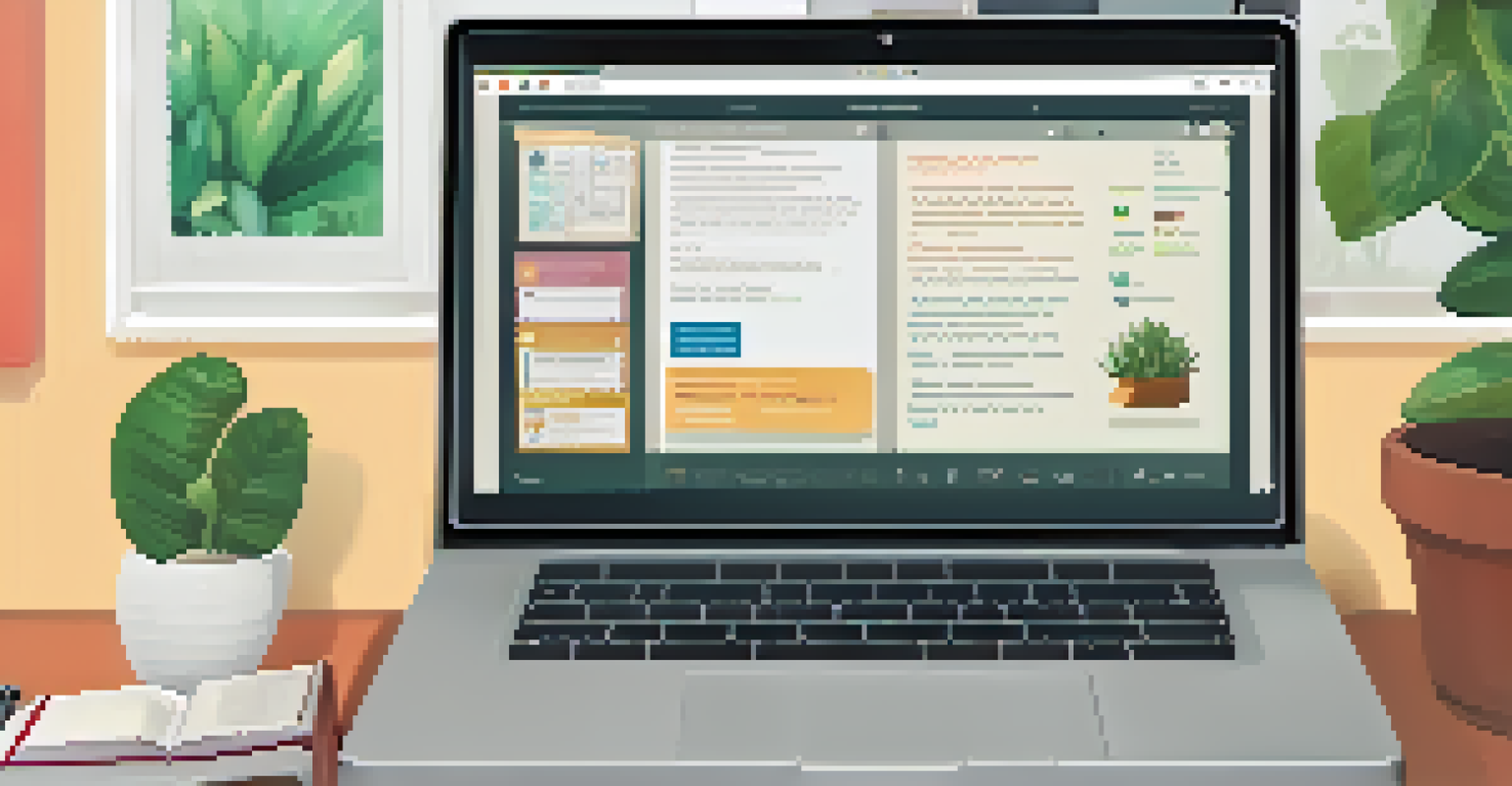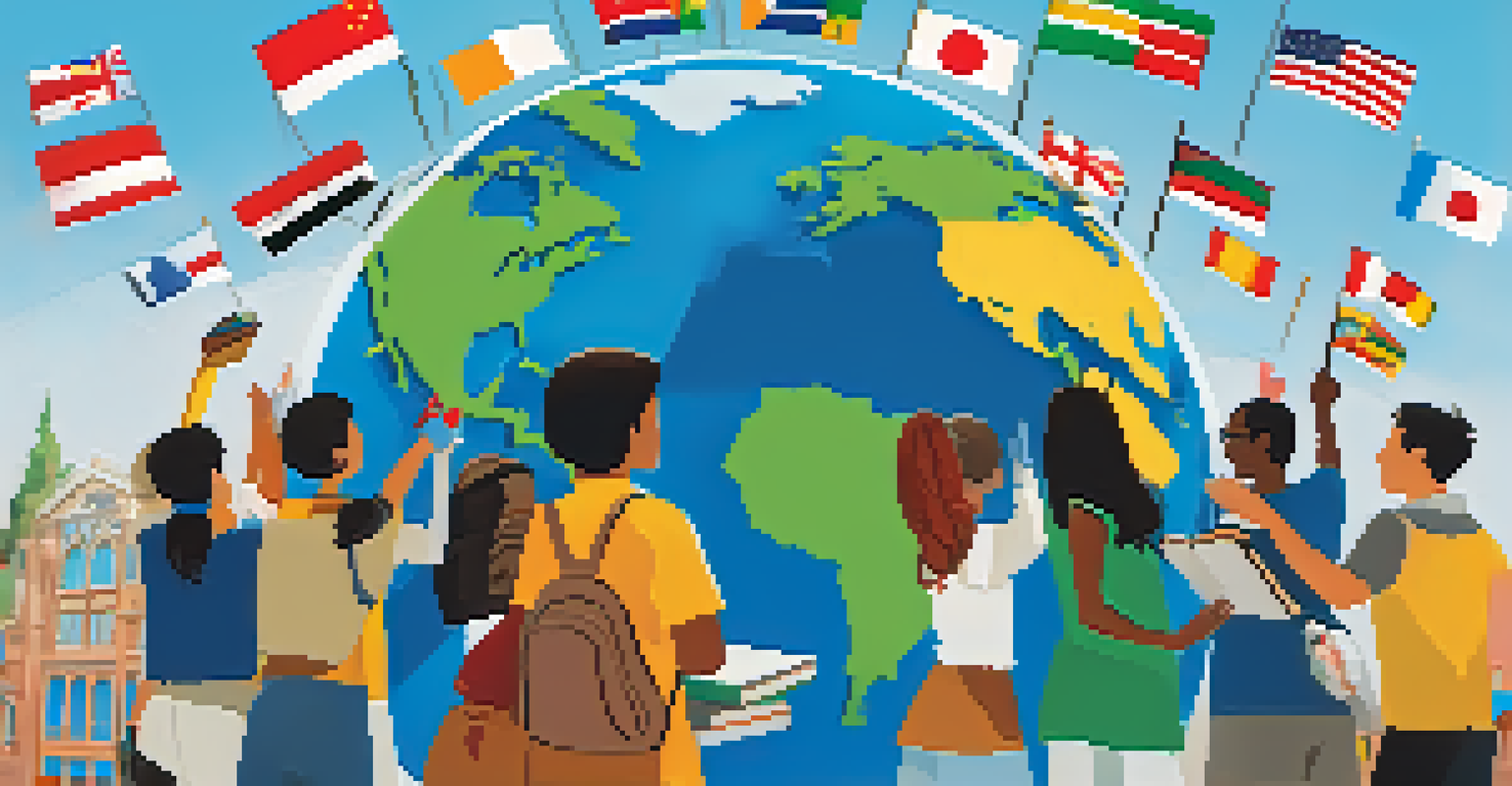The Future of OER: Trends to Watch in Education Technology

The Rise of Open Educational Resources (OER)
Open Educational Resources, or OER, are gaining traction as more educators recognize their potential. These resources, which can include textbooks, lecture notes, and multimedia, are freely available to everyone. By removing financial barriers, OER enables students from diverse backgrounds to access quality educational materials.
Education is the most powerful weapon which you can use to change the world.
Moreover, the collaborative nature of OER encourages educators to share their resources, fostering a community of continuous improvement. This leads to richer content that can be tailored to meet the needs of various learners. As a result, OER not only democratizes education but also enhances the learning experience for students.
In this rapidly evolving landscape, OER is becoming a staple in classrooms worldwide. With ongoing advancements in technology, we can expect even more innovative applications of OER in the future. This trend is paving the way for a more inclusive educational environment.
Advancements in Technology Facilitating OER Access
Technology plays a crucial role in making OER more accessible and user-friendly. Platforms like OpenStax and OER Commons are leading the charge by providing centralized hubs for educators and students. These platforms not only offer a vast array of resources but also feature search functionalities that make finding relevant materials easier than ever.

Additionally, the integration of artificial intelligence and machine learning is enhancing how we interact with OER. Imagine personalized learning experiences that adapt in real-time, offering resources tailored to individual student needs. This level of customization can greatly improve retention and understanding.
OER Enhances Educational Access
Open Educational Resources provide free access to quality materials, bridging gaps for students from diverse backgrounds.
As we move forward, expect to see more tools that seamlessly incorporate OER into existing learning management systems. This integration will not only streamline access but also encourage more educators to adopt OER in their teaching practices.
The Role of Collaboration in OER Development
Collaboration is at the heart of the OER movement. Educators, institutions, and even students are coming together to create and refine educational resources. This collective effort not only leads to higher-quality materials but also fosters a sense of ownership among contributors.
Open educational resources can help level the playing field and provide quality education to all.
For instance, collaborative projects like the Open Textbook Network allow educators from various institutions to share their insights and expertise. This not only enriches the content but also helps to build a supportive community. When educators work together, they can address gaps in existing resources and ensure a more comprehensive approach to education.
Looking ahead, the emphasis on collaboration will likely grow, leading to a wider array of resources that reflect diverse perspectives. This will not only enhance the learning experience but also promote inclusivity and representation in educational materials.
Impact of OER on Educational Equity
One of the most compelling aspects of OER is its potential to bridge educational gaps. By providing free access to high-quality resources, OER can level the playing field for students from underprivileged backgrounds. This shift is crucial in addressing systemic inequalities that often hinder access to education.
Furthermore, OER allows for the customization of materials, catering to different learning styles and needs. This flexibility means that educators can adapt content to meet the unique challenges their students face. As a result, we see a more tailored approach to education, promoting better outcomes for all learners.
Collaboration Boosts OER Quality
The collaborative nature of OER fosters community among educators, leading to improved and diverse educational resources.
As we look to the future, the focus on educational equity will likely drive more institutions to adopt OER. This commitment can lead to transformative changes in how education is delivered, ensuring that every student has the opportunity to succeed.
The Importance of Quality Assurance in OER
While the accessibility of OER is a significant advantage, ensuring the quality of these resources is equally important. As more educators contribute to the OER movement, establishing clear standards for quality becomes crucial. This ensures that the materials students are using are not only accurate but also effective in promoting learning.
Many organizations are beginning to implement peer review processes for OER, similar to those used in traditional academic publishing. This process allows educators to evaluate the usefulness and accuracy of resources before they are widely adopted. By prioritizing quality, we can build trust in OER and encourage more institutions to integrate these resources.
As we move forward, expect to see a growing emphasis on quality assurance within the OER community. This focus will help to elevate the overall standard of educational materials, making OER a reliable choice for educators and learners alike.
The Future of OER Licensing and Copyright
Understanding licensing and copyright is essential for anyone involved in OER. The Creative Commons licensing system has been a game-changer, allowing creators to share their work while retaining certain rights. This flexibility encourages more educators to contribute, knowing they can control how their materials are used.
In the coming years, we may see further evolution in licensing models that promote even greater collaboration. For instance, enhanced licensing options could allow for more nuanced sharing of resources, fostering an environment where educators can build on each other’s work more freely. This could lead to a richer, more diverse pool of educational materials.
OER Drives Global Educational Equity
OER is transforming education worldwide by making high-quality resources accessible in regions with limited traditional materials.
As OER continues to grow, staying informed about licensing will remain vital. Educators and institutions will need to navigate these waters carefully to ensure that they are both protecting their rights and contributing to the greater good of education.
The Global Impact of OER in Education
OER is not just a local phenomenon; it has the potential to make waves globally. Countries with limited access to educational resources are increasingly turning to OER as a viable solution. This shift is helping to address educational disparities in regions where traditional textbooks may be scarce or prohibitively expensive.
For example, initiatives in parts of Africa and Asia are leveraging OER to improve educational outcomes. By providing access to high-quality materials, educators are able to enhance their teaching methods and better engage students. This global reach underscores the transformative power of OER in making education more accessible.

Looking ahead, collaborations between countries and institutions will likely deepen. By sharing resources and strategies, we can create a more interconnected educational landscape, where OER serves as a cornerstone for future learning.